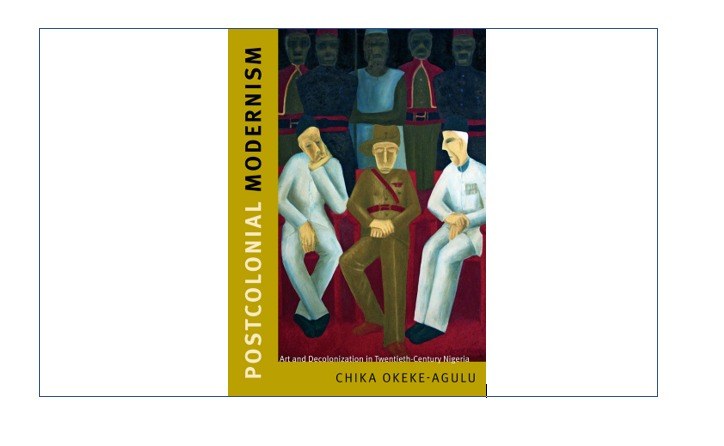
Title: Postcolonial Modernism; Art and Decolonization Twentieth Century Nigeria
Author: Chika Okeke Agulu
Publisher: Duke University Press
Date: 6 April 2015
Hardcover: 376 pages
In Postcolonial Modernism; Art and Decolonization Twentieth Century Nigeria, Okeke Agulu, a Professor of African and African Diaspora Art at Princeton University, New Jersey, offers a substantial contribution towards a better understanding of African art in the early post-independence years. Challenging widespread discourses that present African art of the period as derivative from European modernism, Okeke-Agulu presents the artistic practice and ideology of a crop of artists that created a vibrant and original Nigerian modernism inserted in continental artistic discourses.
This book examines the emergence of post colonial modernism in the light of the Art Society of the Nigerian College of Arts Science and technology (NCAST) now Ahmadu Bello University, Zaria. Originally called the Zaria Art Society, it was founded by Uche Okeke in 1958 while in NCAST with other art students who were his contemporaries namely Bruce Onobrakpeya, Demas Nwoko, Yusuf Grillo, Simon Okeke, Jimoh Akolo, Oseloka Osadebe and Emmanuel Odita together they encouraged the delving back into their indigenous cultures in order to fuse local content with western technique. The author situates the Art Society as a key proponent in the emergence of post colonial modernism in Nigeria. Though he discusses the major contributions of key artists like Aina Onabolu and Ben Enwonwu in this regard, he highlights the difference in the ideology with which these members of the Art Society and the earlier mentioned champions of modern art in Nigeria engaged their creative abilities in their bid to emancipate themselves from the shackles of colonial rule politically and artistically. The spotlight is thrown on Uche Okeke and Demas Nwoko as their works are recurrently used in this analysis. Through this book, the author illustrates the role members of the Art Society played in the development of Post Colonial Modernism in Nigeria.
Presenting it within the wide context of the emerging African modernism, Okeke-Agulu presents the broad and complex system in which Nigerian artists and intellectuals engaged in nation building and the development of local artistic discourses. Analysing the evolution of this new modernism from the beginning of the twentieth century, the book goes on to focus more concretely in the political independence decade roughly between 1957 and 1967. Similar occurrences by different artists in other parts of Africa and the world are taken into consideration and in turn spelt out. Latching on to the interplay between literature and art, the author also evaluates the role the Mbari Artists and Writers Club and its publication “Black Orpheus” had in the development of this new modernism.
The book is split into seven chapters; Colonialism and the Educated Africans, Indirect Rule and Colonial Modernism, The Academy and the Avant-Garde, “Transacting the Modern: Ulli Beier, Black Orpheus, and the Mbari International”, After Zaria, Contesting the Modern: Artists’ Societies and Debates on Art, Crisis in the Postcolony. In the words of the author, “this book demonstrates the specific ways that aspiration to and experience of political sovereignty, in the hands of young Nigerian artists, was translated into an artistic modernism closely aligned to the experience and realities of Nigeria’s postcolonial modernity”.
“This book offers readers a complex study into the development of Nigerian modernism within a wider political, cultural, and artistic context of decolonization. Chika Okeke-Agulu successfully achieves a delicate balancing act, keeping the individual artists and their work at the centre of this critical enquiry while also analyzing how they were connected to a wider art world context.” Helena Cantone, African Studies Quaterly.
“The book is an enormously valuable contribution to our understanding of Nigerian art history, both in its text and its 127 illustrations, many of which will be new to many scholars.... it is a book that belongs in the library of every scholar interested in African art history, Nigeria, modernism, and postcolonial studies.” Jean M. Borgatti, International Journal of African Historical Studies.
Jessica Nzenwata
Head of Research Department